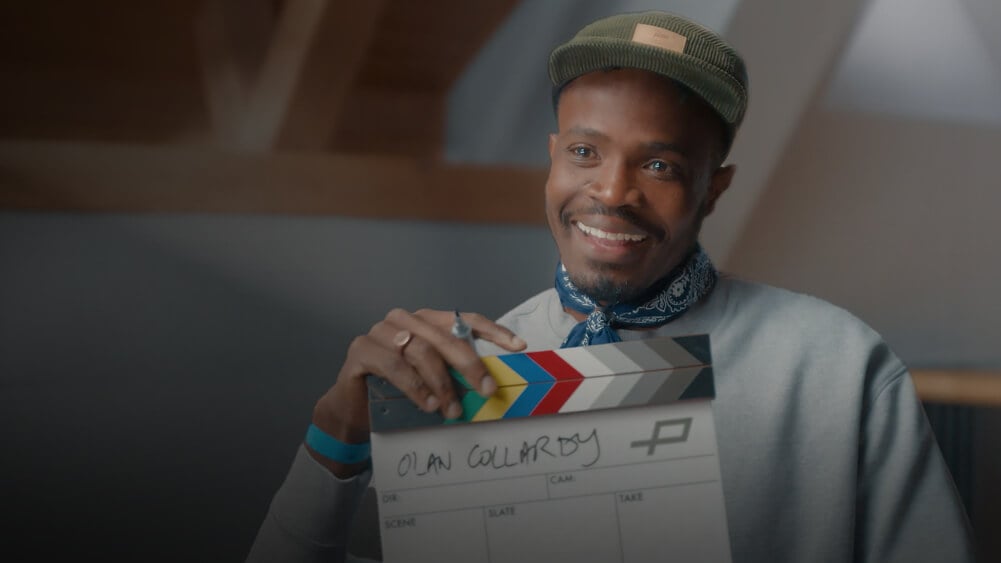A cinematographer’s career path: Olan Collardy

From a young age, Olan Collardy had a creative spirit. When he went on to study computer science and write software, that artistic spark never faded, and when he subsequently discovered digital cameras, it ignited a passion for cinematography. With no formal training or industry connections, Collardy focused on learning through doing, driven by persistence and curiosity, and in the process has built a body of work that includes feature films, shorts, television and commercials. Collardy’s journey may have started with curiosity and a digital camera, but it’s his instinct, persistence, and ability to find truth through the lens that continue to shape his path forward.
Filmmaking fueled by creativity
Before he discovered his passion for cinematography, Collardy remembers seeing himself as a creative from a young age. “I have been a creative right from five, six, seven, started out drawing and painting, then dabbled in music, creative writing, but I've always also stuck to the academic roots,” he says.
“I went to University College of London to study computer science, but between being six years old and being someone who writes software, I found digital cameras,” he shares. “When I found that camera and I looked in the viewfinder, it felt like all the facets of creativity, whether that was drawing, painting, music, had kind of coalesced into one form, and that's why I fell in love with it.”
The team behind the lens
As his passion evolved into a professional pursuit, Collardy found that cinematography offered more than just creative expression. “What I also really like about the craft is the fact that it's a team sport,” he reflects. “The art of cinematography is that you have to collaborate with a director, with a costume designer, with a production designer. I think I always kind of need a seed, someone just to give me a rhythm and something to run off.”
When asked about his career path, Collardy doesn’t point to one single turning point, but rather a series of meaningful steps along the way. “It's been a series of breaks,” he shares. “There is a video I shot, it was called Essence Man. It was a moment where I realized it's not just about the camera and the lenses, and it comes back to the whole notion that it's a team sport. That was the first time I remember shooting something I was extremely proud of. And I didn't go to film school, so I knew nothing about the industry. I was just figuring my way out in the dark.”
Collaborating with Panavision
Feeling proud of Essence Man marked a turning point for Collardy. It gave him the confidence to start chasing new opportunities, often guided more by instinct than industry know-how. It was also instinct that led him through the doors of Panavision London, an experience that still feels surreal today. “Panavision is kind of like a household name,” Collardy says, “and I remember it was about 2016 or 2017, there was a lovely man called George [Rumsey, former head of commercials at Panavision London]. I just messaged him and said, ‘Hey, George, I would love to come into Panavision and do a test.’ And he was like, ‘Yeah, sure. Come in.’ And I was like, ‘What? I can just go into Panavision and test glass?’ It just blew my mind because this is Panavision opening their doors to some no-name any guy. I'll never forget that experience.”
That visit marked the beginning of an ongoing relationship that continues to support Collardy’s growth and creative visions. “They've really helped me,” he says. “My past two films have been serviced by Panavision, and I think we have a great relationship. When I have a commercial that has money, I go to Panavision. When I have a short film or a passion project that has little or no funds, they always make it work,” he says. “I want to say a big thank you to the belief from Panavision that, 'Hey, maybe this guy's worth supporting.’”
Guided by instinct
What guides Collardy’s visual choices remains deeply personal. For him, the heart of cinematography lies not in technical charts or specs, but in human faces. “I'm someone who largely just wanted to shoot human faces because I think human faces are some kind of landscape that I like to explore,” he explains. “When I do my camera testing and my lens tests, all the charts in the background, I'm not really interested in that. I just want to put a face in front of the camera. I see what the lens is doing to the face. Is it distorting the face? Which could be a good thing depending on what the film wants to say. And how soft are the lenses? How does it feel on the skin tone? Does it even-out of the creases? Does it accentuate them? Are they warm, are they colder? So, I try to do those tests.”
That instinctual, human-first approach extends to how he’s built his career, following that same creative curiosity he had when he was younger. “I don't think I would be the kind of DP I am today if I'd been able to go back in time and been too intentional,” he reveals. “I think I would have been self-conscious about my work, and I think I would've made certain decisions that I shouldn't have. I strongly believe in following the craft and just dedicating your time to paying your 10,000 hours, and everything else will follow.”